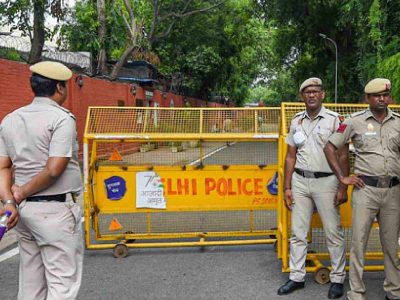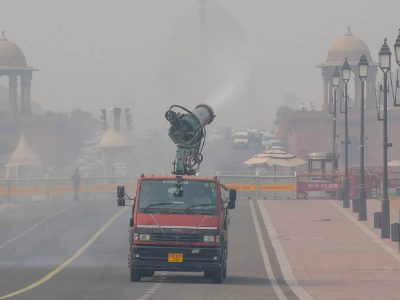The month of Ramzan is both draining and exciting for those observing its fasts. It is a month where they spend their days fasting with no food to eat or water to drink. But as the sun sets in and the call for maghrib prayers echo in the sky, an ensemble of various delicacies is spread on a dastarkhwaan (table spread).
Then comes the everyday ritual of visiting markets to try different food and drinks.
The street opposite Jama Masjid, the Matia Mahal area, becomes a haven for food lovers. As one enters the street, different aromas hit the nose as the calls of shopkeepers keep the vibe dramatic.
From various sheermal (sweet flatbread) to chicken tikka, from grilled meat to sharbat-e-mohabbat, everything is available to satisfy one’s palate. The street remains alive as late as quarter to 5 am during the month of Ramzan. After the fajr prayers at dawn, shopkeepers pack their things up and the rest of the day becomes sluggish, only to come alive in the evening.
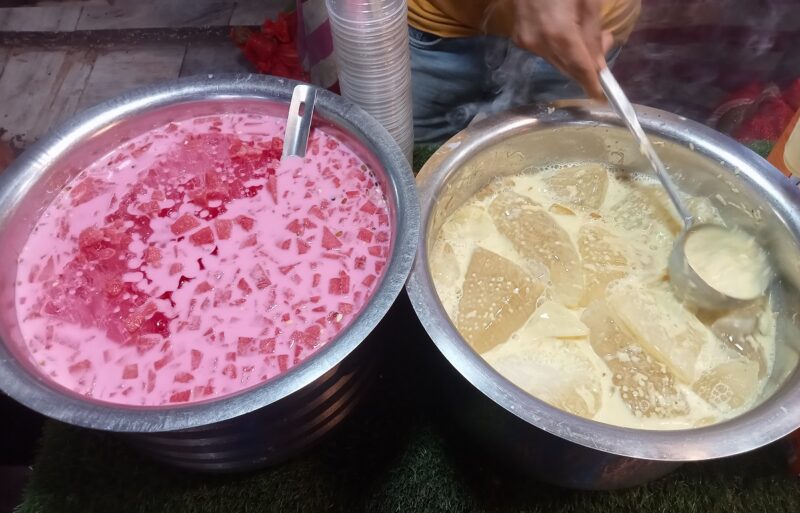
“Mohabbat ka sharbat (Drink of love, Roohafza with watermelon and milk) is a special drink during the month of Ramzan. We also sell nafrat ka sharbat (drink of hatred, a drink made of apples and milk). We put up our stall in Ramzan specially and it continues for four months after that,” a shopkeeper says.
However, chefs and food connoisseurs are exploring other food hotspots. Zakir Nagar is another market known for its colourful clothes, beautiful jewellery and food. During the month of Ramzan, it turns into a spectacle.
The area is known for famous outlets like Jawed’s Nahari, Gulawati Kebabs, Salman’s Chicken Tikka and Al-Umar’s Chicken Korma that sell traditional meat dishes. However, chef Saleha Siddiqui observes one more dish that she believes is special to its food culture and often recommends to people on her food walks: chhole kulche.
“Whenever I take the food-lovers to this chhole-kulche stall, they say that it is so tasty that it almost tastes like korma,” she laughs.
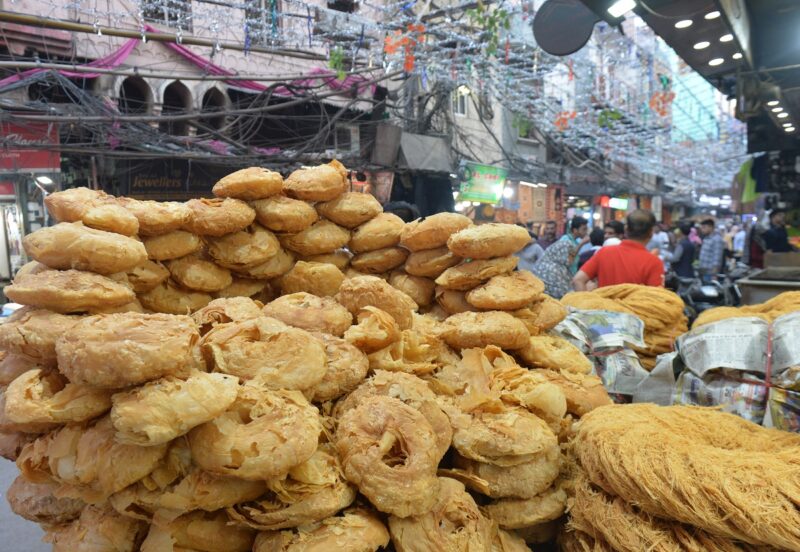
She tells Patriot that during the month of Ramzan, the shopkeeper disrupts his usual timings.
“Everyday, I would see him sell kulche in the morning, but now that Ramzan is here, he sets up his stalls at 8:30 in the evening.”
Saleha started her food walks in 2019 in order to change the perception of people regarding Zakir Nagar and Batla House. Recently, she did her food walk with INTACH where at least 20 people joined her to taste the flavour of the locality. She runs her bakery called Salz Bakes in the area.
“Even the locals of Zakir Nagar do not realise how special the food is here. Old Delhi is often considered as a food hub, but the food here is equally diverse and tasty. When I started these food walks, a lot of people said that it has changed their perception not only about food here but also the kind of place that it is. Many stereotypes are associated with the place that the food walk has successfully managed to curb,” she says.
“A lot of people, especially women, think that the place is not safe to visit, particularly in the evening. But when people joined the food walk, they realised that people here are actually very hospitable and the place is as safe as any other,” she adds.
In drinks, apart from the two famous milk drinks, the place offers one unique kharbuz ka sharbat (muskmelon and milk drink). There are varieties of tea as well such as Irani tea, pineapple tea, Nagori tea, and lemon tea.
In Seelampur, the spectacle during the month of Ramzan is the same as in many other Muslim localities. It is a hub for traditional meat dishes such as nahari, seekh kebabs and keema, dum biryani, tangdi kabab, among others.
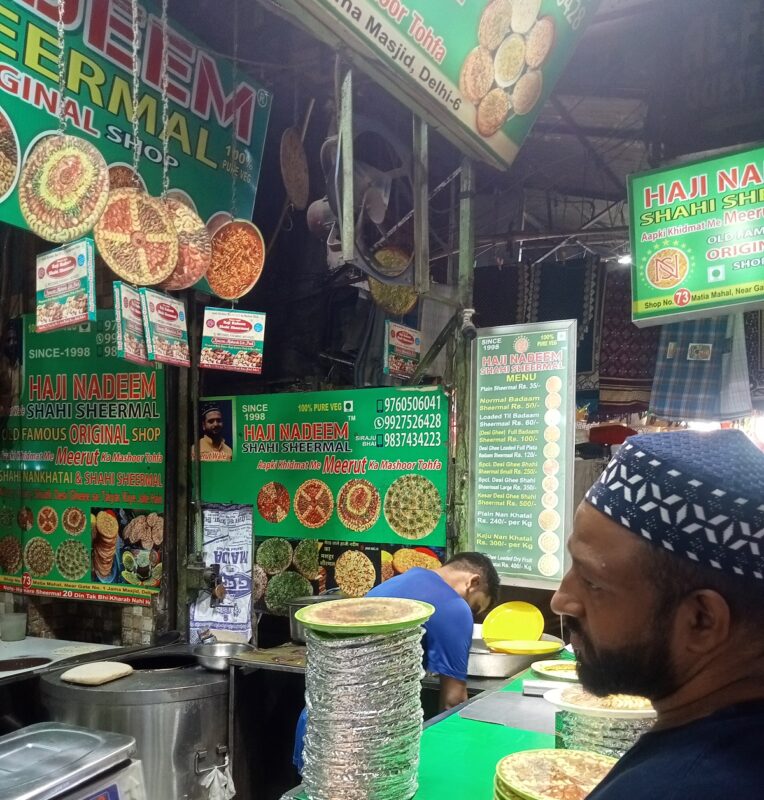
As the place is inhabited by working class people, the food is cheaper but the quality remains the same. The milk sherbet, a mandatory drink during the month of Ramzan, has a special alteration: instead of Rooh Afza, the milk drinks are sold with flavours such as coffee, litchi, strawberry, and butterscotch.
The flavour syrup is thick in texture and its recipe is often considered a legacy among the shopkeepers. Pappu Cold Drink in Brahmapuri is much loved among locals.
“I never have to go out to eat in places like old Delhi. This place where I live has much to offer and I never see the reason to visit any other place. The only reason we go to old Delhi is to break our fast in Jama Masjid,” says Khalid Hussain, a resident in the area.
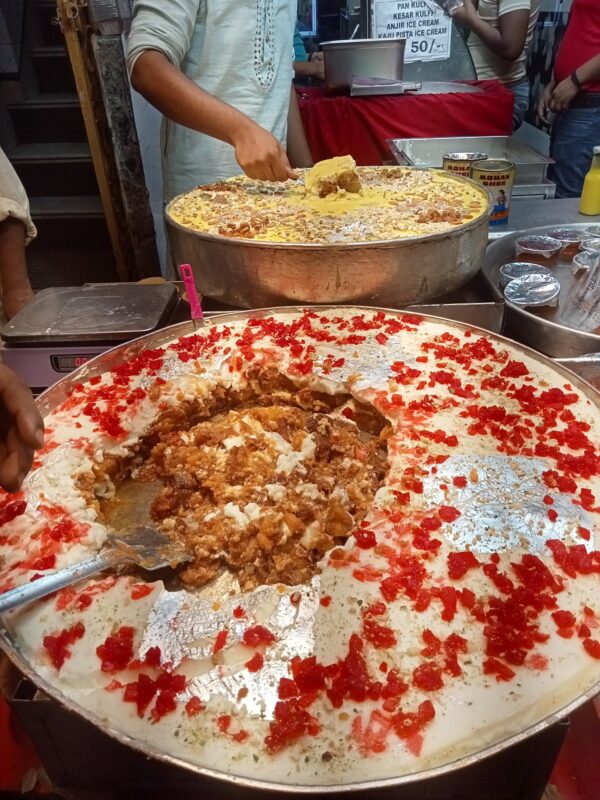
Haleem, a special dish made from wheat, meat and lentils, is a favourite during the month of Ramzan. The dish can be found in all the Muslim localities, usually complemented by biryani.
For those away from home and cannot often visit these places, there are different curated services made available. Chef Javed Akhtar runs a Ramzan platter to give the taste like home to the people staying in Delhi for various reasons.
“During the month of Ramzan, more than anything, there is a sense of nostalgia people feel for home due to lack of proper food or the comfort that family provides. I curate my platters in such a way that people do not miss their home for food at least. I always take care about the ratio of nutrients that go in the platter,” he says.
His platters contain kachri (rice papad), dates, pakora, fruit salads, lentils, among others. However, the platter changes its course as per his plan.
His restaurant Bun-Tie often delivers food to the students of Amity University, Lady Shri Ram College, Jamia Millia Islamia among others and the professionals living in various parts of Delhi and Noida.


